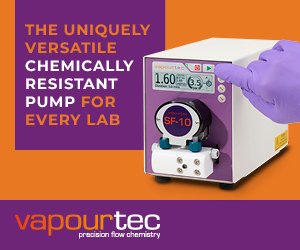Continuous Processing: Challenges and Opportunities in Precision Medicine
01 June 2023 | Thursday | Opinion

Image Source : Public Domain
This personalized approach holds immense promise for improved patient outcomes and more efficient healthcare systems. Continuous processing, a cutting-edge manufacturing technique, is playing a vital role in the development and production of precision medicine therapies.
In this article, we explore the challenges and opportunities associated with continuous processing in precision medicine, along with real-world examples of its application.
Challenges in Continuous Processing for Precision Medicine:
-
Scalability: Implementing continuous processing techniques for precision medicine therapies poses challenges related to scalability. As the demand for personalized treatments increases, ensuring efficient and scalable manufacturing processes becomes crucial. Developing continuous manufacturing platforms that can handle the high variability and customization required for precision medicine presents a significant challenge.
-
Process Optimization: Continuous processing involves complex interconnected unit operations, which require extensive process optimization. Fine-tuning and integrating multiple steps, such as synthesis, purification, and formulation, in a continuous manner necessitate robust process control strategies. Achieving consistent product quality and yield while adapting to individual patient requirements further complicates the optimization process.
-
Regulatory Considerations: Continuous processing in precision medicine introduces regulatory considerations due to the dynamic nature of manufacturing processes. Existing regulations and guidelines often focus on batch processes, making it necessary to develop frameworks that accommodate the continuous manufacturing paradigm. Ensuring quality control, traceability, and process validation are key areas that require harmonization and collaboration among regulatory authorities, manufacturers, and researchers.
Opportunities in Continuous Processing for Precision Medicine:
-
Improved Efficiency and Flexibility: Continuous processing enables real-time monitoring and control, leading to enhanced process efficiency and flexibility. The ability to adjust and optimize manufacturing parameters in real-time allows for rapid adaptation to patient-specific requirements. This agility leads to reduced production time, minimized waste, and increased productivity in precision medicine manufacturing.
-
Cost Reduction: Continuous processing has the potential to lower production costs in precision medicine. By eliminating the need for large-scale infrastructure, reducing downtime between batches, and optimizing resource utilization, continuous manufacturing offers significant cost-saving opportunities. This can contribute to broader access to personalized therapies, making precision medicine more affordable and accessible to a larger population.
-
Quality Assurance and Product Consistency: Continuous processing offers enhanced quality control and product consistency in precision medicine manufacturing. Real-time monitoring and process feedback enable immediate detection and correction of variations, ensuring consistent product attributes. This results in therapies with precise dosages, improved efficacy, and reduced risk of adverse events.
Examples of Continuous Processing in Precision Medicine:
| Therapy | Continuous Processing Techniques | Country/Company Involved |
|---|---|---|
| Gene Therapy | Continuous Bioreactors, Inline Purification | United States (Pfizer, Novartis) |
| Personalized Vaccines | Continuous Cell Culture, Inline Formulation | United Kingdom (GlaxoSmithKline), Germany (BioNTech) |
| Cell-Based Immunotherapies | Continuous Cell Expansion, Harvesting | Australia (CARtherics, Atara Biotherapeutics) |
| Biologics Manufacturing | Continuous Chromatography, Inline Analytics | Singapore (Lonza), Japan (Takeda Pharmaceutical) |
Note: The examples mentioned are not exhaustive but represent the diversity of continuous processing applications in precision medicine. Several other therapies and companies across the Asia-Pacific region are actively engaged in leveraging continuous processing techniques.
Conclusion:
Continuous processing presents exciting opportunities for precision medicine, offering enhanced efficiency, cost savings, and improved product quality. While challenges related to scalability,
regulatory considerations, and process optimization exist, ongoing research and collaboration among industry stakeholders and regulatory bodies are addressing these obstacles. The examples provided demonstrate the successful implementation of continuous processing techniques in precision medicine by various companies worldwide.
To fully harness the potential of continuous processing in precision medicine, it is essential to encourage innovation, invest in research and development, and establish robust regulatory frameworks that adapt to the dynamic nature of continuous manufacturing. Governments, industry leaders, and regulatory authorities must collaborate to ensure the safe and efficient production of personalized therapies while maintaining high standards of quality control and patient safety.
In the Asia-Pacific region, where precision medicine is gaining significant momentum, countries such as Singapore, Japan, South Korea, and Australia are actively promoting the adoption of continuous processing techniques. By fostering a supportive ecosystem for research, development, and manufacturing, these countries are positioning themselves at the forefront of precision medicine advancements, attracting investment and talent to the region.
As the field of precision medicine continues to evolve, continuous processing will play an increasingly crucial role in enabling the efficient production of personalized therapies. The ability to adapt manufacturing processes in real-time, reduce costs, and ensure consistent product quality aligns perfectly with the core principles of precision medicine—providing individualized care to patients based on their unique genetic makeup.
In conclusion, continuous processing offers both challenges and opportunities in the field of precision medicine. While scalability, process optimization, and regulatory considerations require attention, the benefits of improved efficiency, cost reduction, and product consistency make continuous processing an indispensable tool for the future of precision medicine. By leveraging this innovative manufacturing approach, the Asia-Pacific region can lead the way in advancing precision medicine and transforming healthcare delivery for the benefit of patients worldwide.
BioPharma APAC Insight Series
arcilla.fran@biopharmaapac.com
Most Read
- Top 25 Biotech & Biopharma Leaders in Sustainable Innovation, 2025
- China’s Biopharma Dealmaking Surges in H1 2025, Driven by Record Licensing and Oncology Focus
- Chikungunya in China: How a “Forgotten” Arbovirus Found the Perfect Storm
- How Innovation Gaps in Biopharma Raise New Safety Concerns
- Smart Implants and the Future of Musculoskeletal Injury Treatment
- How Ethical Gaps in Psychiatry Could Undermine Biopharma Progress
- The Evolving Landscape of Women’s Health Innovation in the Asia-Pacific
- Using NLP-Driven Decision Support in Emergency Health Assistance
- Taiwan Steps Into the Global Spotlight With a New Cancer Therapy
- The Role of Unique Device Identification (UDI) in Tracing Medical Device Safety
- The Importance of a Patient’s Mental Health During Clinical Trials
Bio Jobs
- The State of Biotech and Life Science Jobs in Asia Pacific – 2025
- Avantor’s New CEO Ligner Aims to Unlock Global Potential and Deliver Shareholder Value
- AstraZeneca Commits $50 Billion to U.S. Expansion by 2030 in Biggest-Ever Global Investment
- Thermo Fisher, SAMRC, and South Africa’s Department of Science and Innovation Launch CATIR to Nurture Next-Gen Scientists
- Cube Biotech Appoints Former Sartorius CEO Dr. Joachim Kreuzburg to Board of Directors
- FDA’s AI Transition Marks a Turning Point in Drug Review: Industry Faces Pressure to Adapt Amid 20% Workforce Cut
- WuXi XDC Completes Mechanical Build of Singapore Bioconjugate Manufacturing Hub
News
Editor Picks











